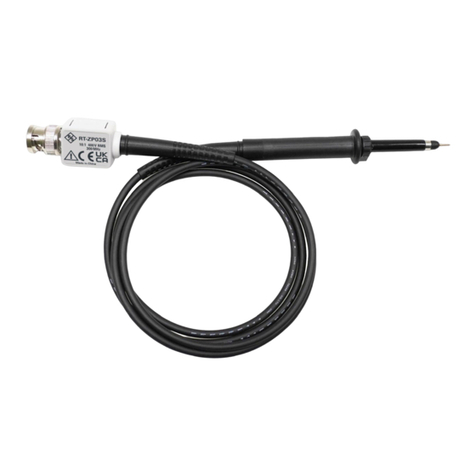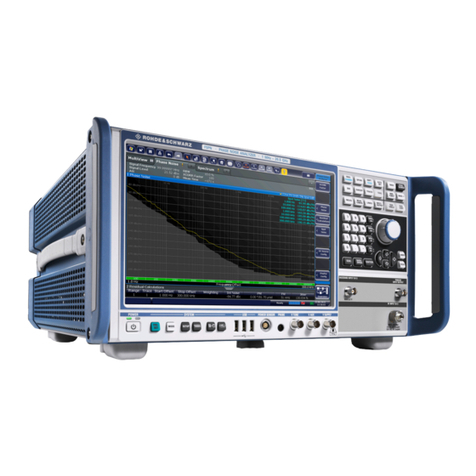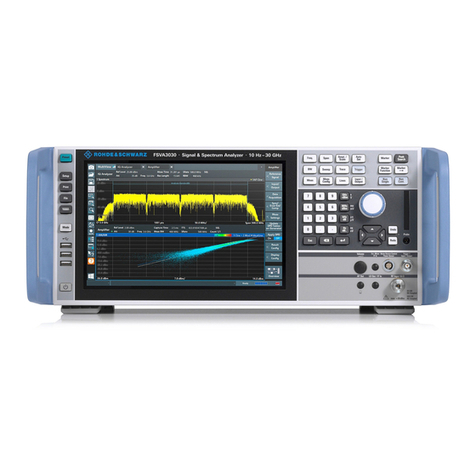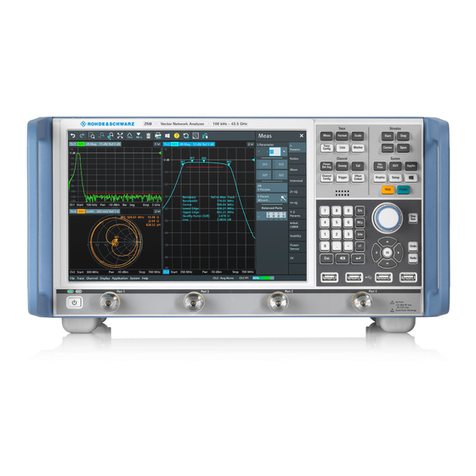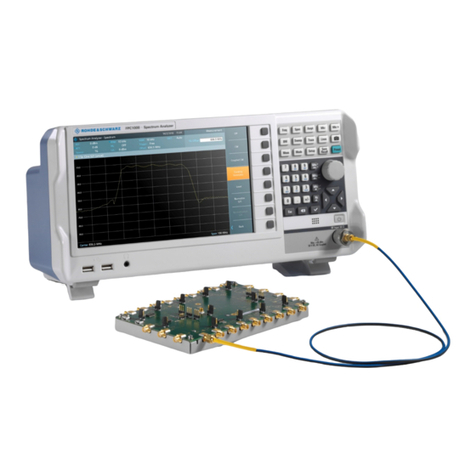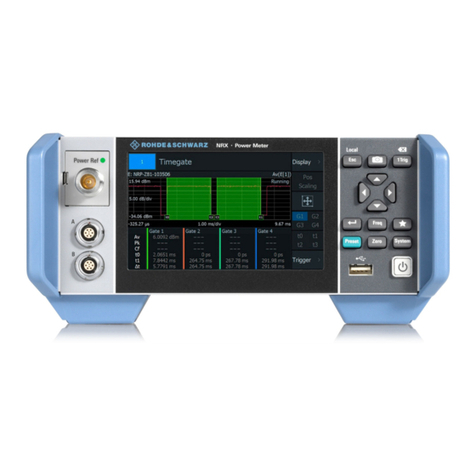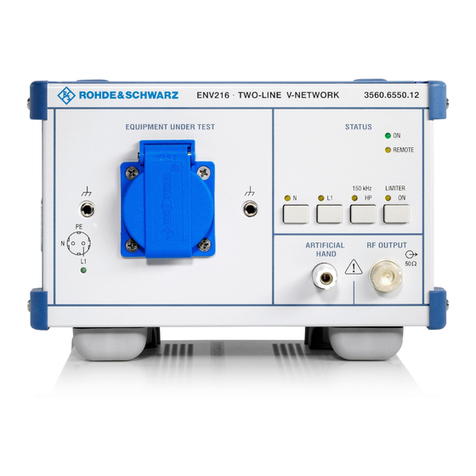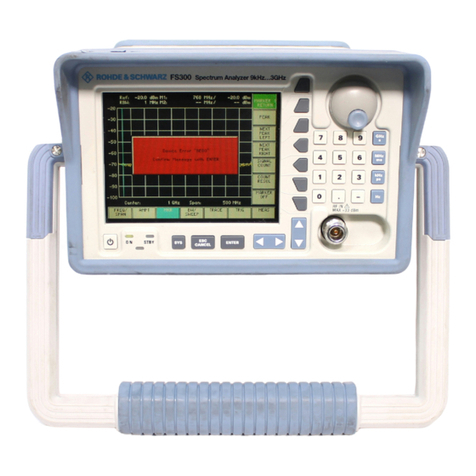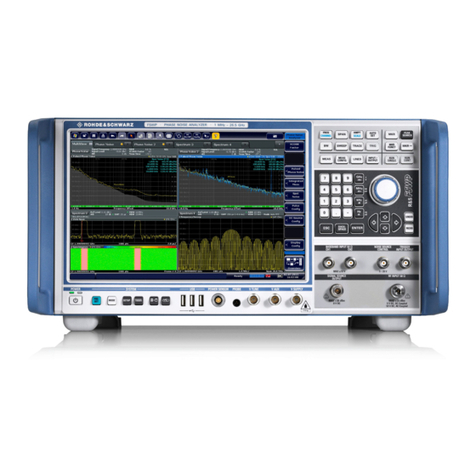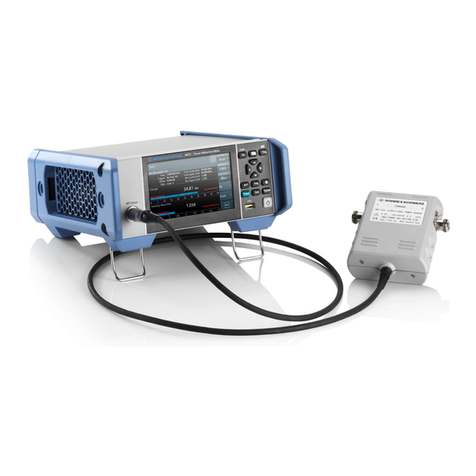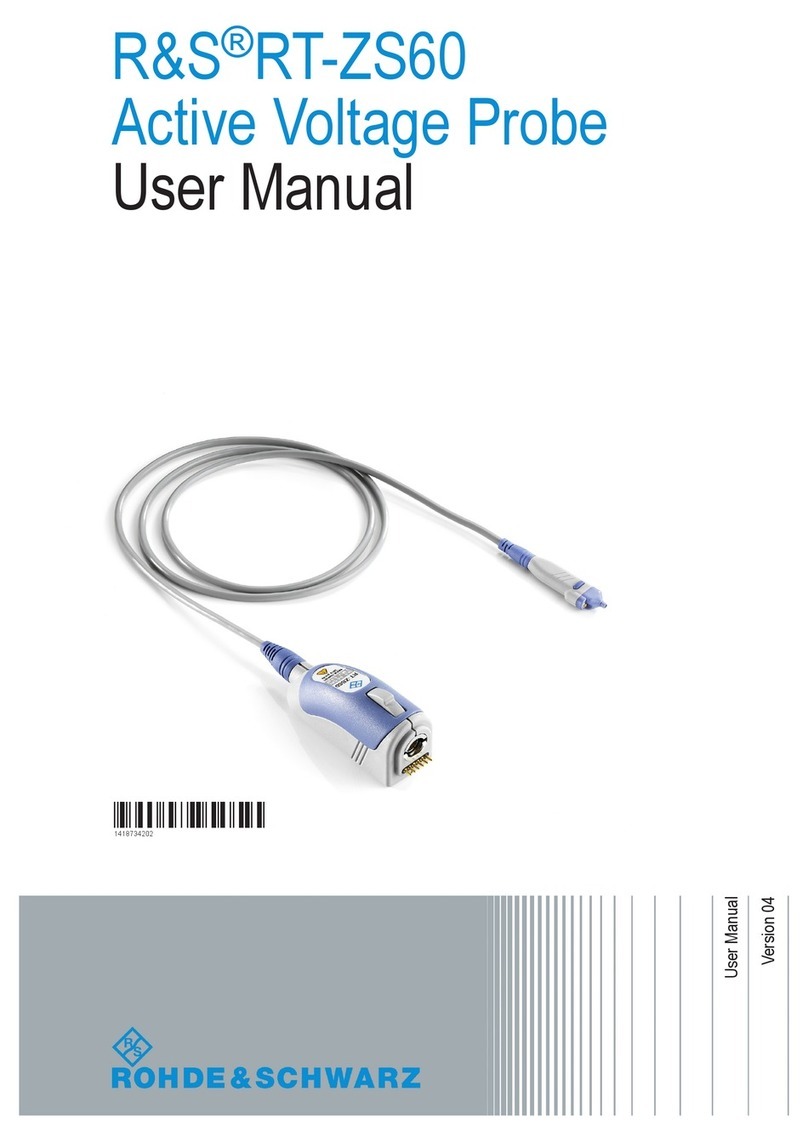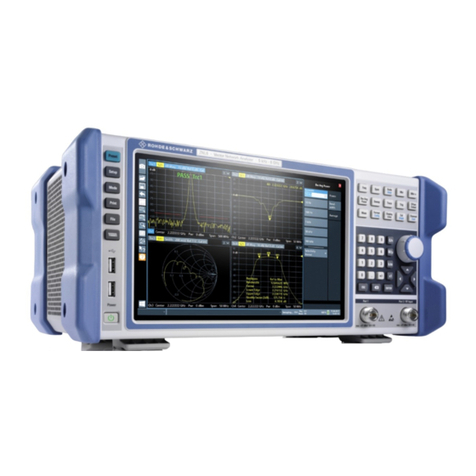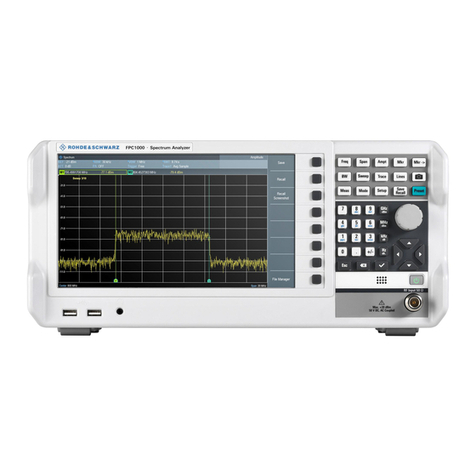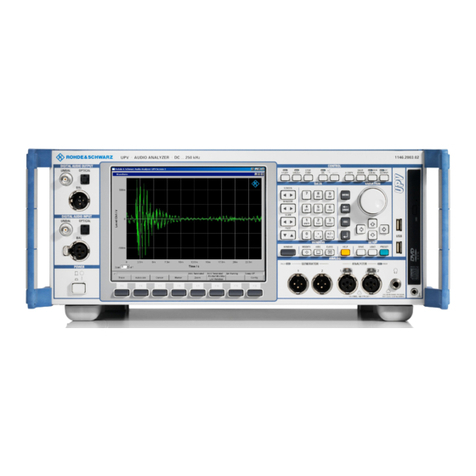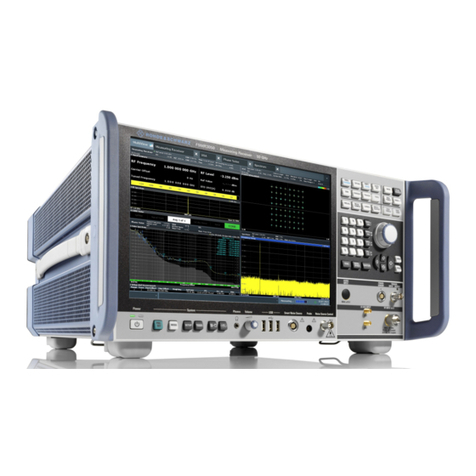1. Batterien nicht zerlegen, öffnen, zerkleinern oder aus großer Höhe fallen lassen.
Bei mechanischer Beschädigung besteht die Gefahr des Austritts von Chemikalien.
Austretende Gase können zu Atembeschwerden führen. Sofort lüften, in schweren
Fällen einen Arzt konsultieren.
Bei Haut- oder Augenkontakt mit austretenden Chemikalien können Hautirritationen
und Reizungen auftreten. In diesen Fällen die Haut oder Augen sofort gründlich mit
Wasser ausspülen und einen Arzt konsultieren.
2. Zellen oder Batterien weder Hitze noch Feuer aussetzen. Nicht im direkten
Sonnenlicht lagern. Bei Überhitzung besteht die Gefahr einer Explosion oder eines
Brandes, was zu schweren Verletzungen bei Personen führen kann.
3. Batterien sauber und trocken halten. Falls die Anschlüsse verschmutzt sind, mit
einem trockenen, sauberen Tuch reinigen.
4. Batterien vor dem Gebrauch laden.
Die Batterie darf ausschließlich mit dem entsprechenden Rohde &Schwarz
Ladegerät geladen werden. Siehe Handbuch oder Datenblatt des Gerätes für die
genaue Bezeichnung des Ladegerätes.
Wenn Batterien unsachgemäß geladen werden, besteht Explosionsgefahr, was zu
schweren Verletzungen bei Personen führen kann.
5. Die Ladetemperatur muss zwischen 0 °C und 45 °C betragen
(für mögliche Einschränkungen siehe Handbuch).
6. Ein Entladen darf nur zwischen 0 °C und 50 °C erfolgen
(für mögliche Einschränkungen siehe Handbuch).
7. Batterien nur so lange laden, bis sie vollständig aufgeladen sind. Ein häufiges
Überladen führt zu einer geringeren Lebensdauer der Batterie.
8. Die Batterie aus dem Gerät entfernen, wenn sie nicht benutzt wird. Nach längerer
Lagerzeit kann es erforderlich sein, die Batterie mehrmals zu laden und zu entladen,
um die volle Leistungsfähigkeit zu erlangen.
9. Die Batterie nur mit dafür vorgesehenen Rohde & Schwarz-Geräten betreiben. Siehe
dazu das Handbuch des Gerätes.
10.Die Batterien nicht über unsortierten Siedlungsabfall entsorgen, sondern getrennt
sammeln. Nach Ende der Lebensdauer über eine geeignete Sammelstelle oder eine
Rohde&Schwarz-Kundendienststelle entsorgen.
EU - Kennzeichnung für Batterien und Akkumulatoren
11.Bei Rücksendungen von Lithiumbatterien zu Rohde & Schwarz - Niederlassungen
müssen die Transportvorschriften der Verkehrsträger (IATA-DGR, IMDG-Code, ADR,
RID) befolgt werden.
12.Diese Sicherheitsinformationen für zukünftige Informations- und Nachschlagezwecke
aufbewahren.
1171150771_02_00_man_1_de_en_fr__001-0












